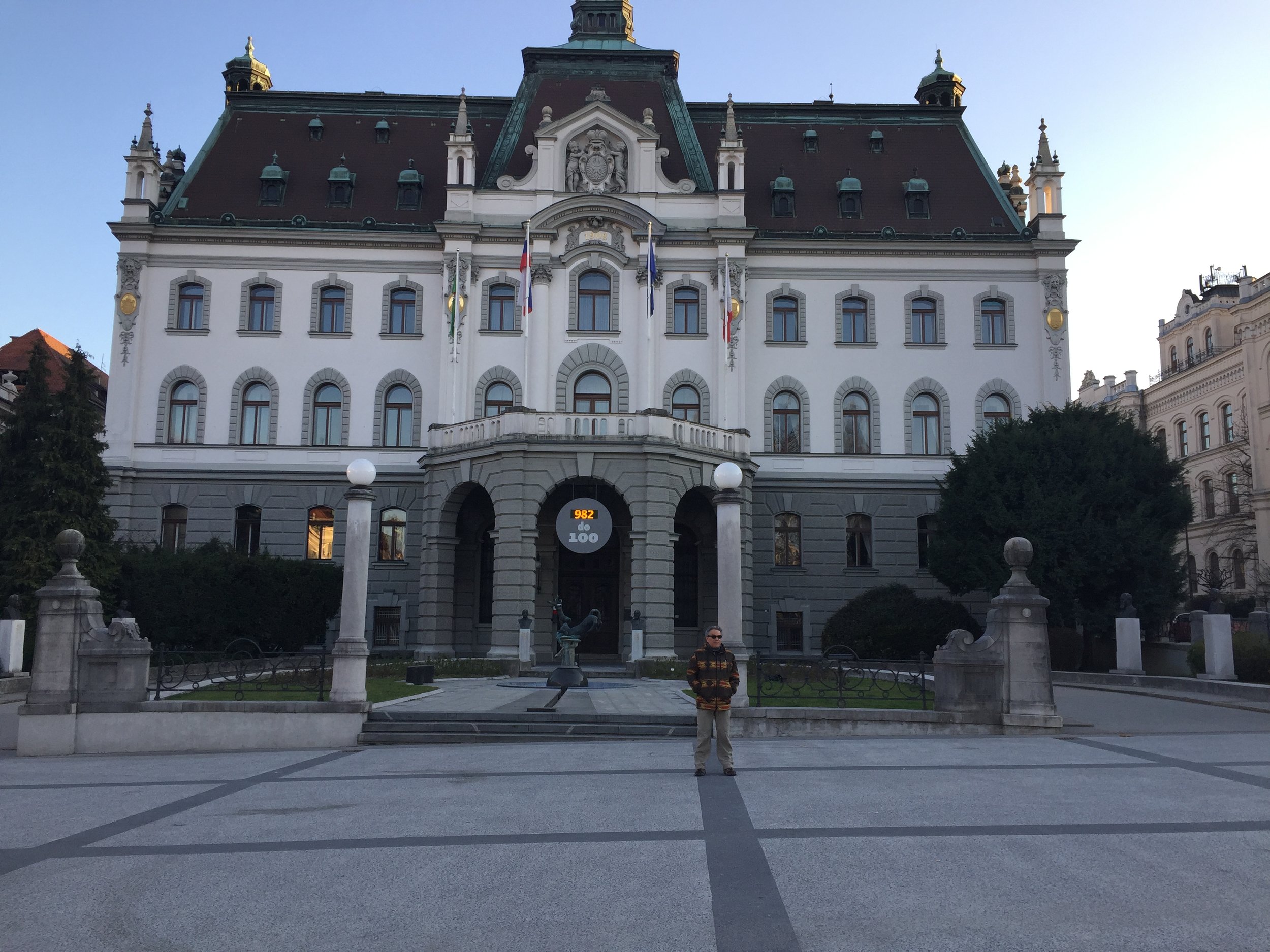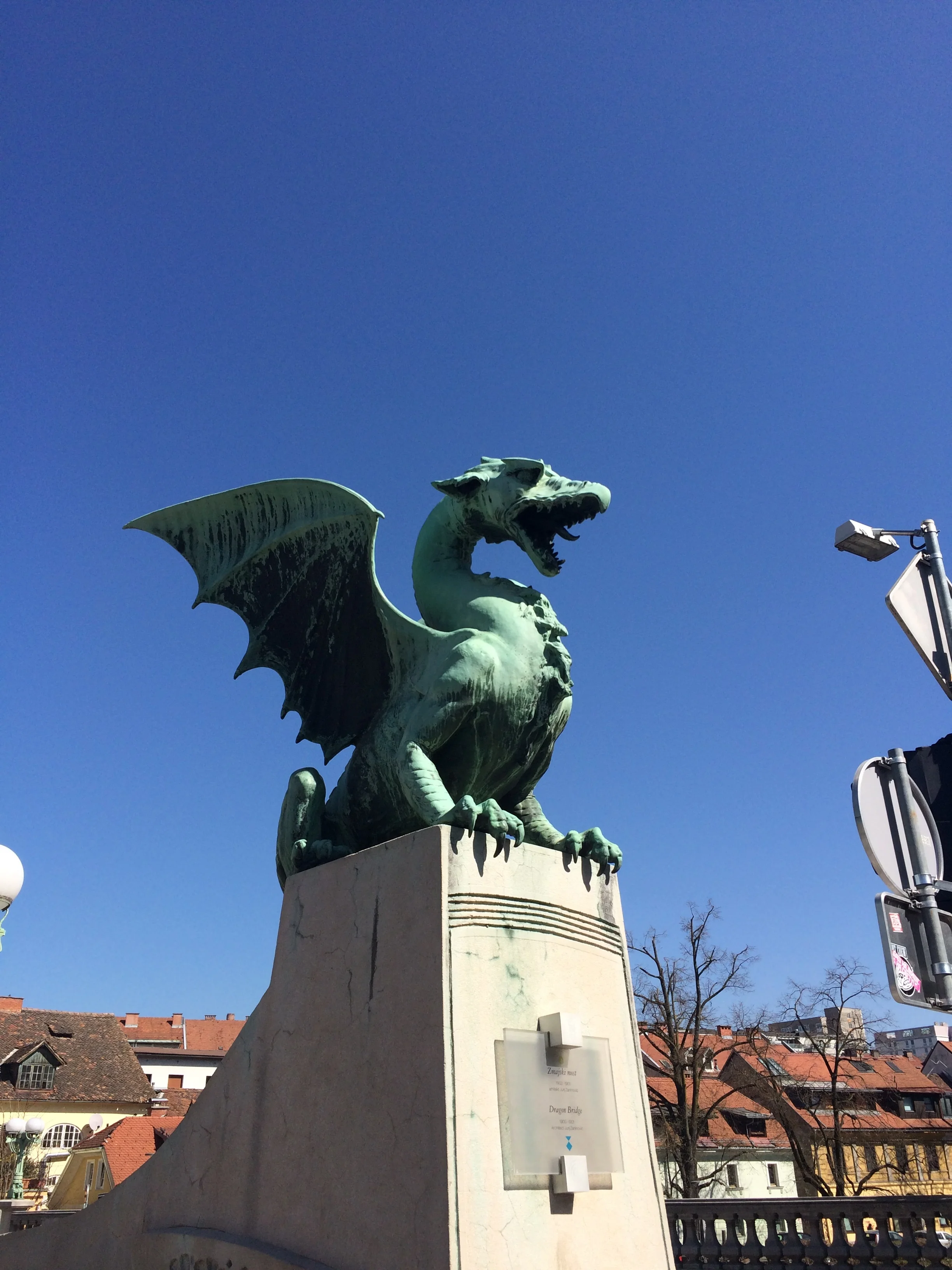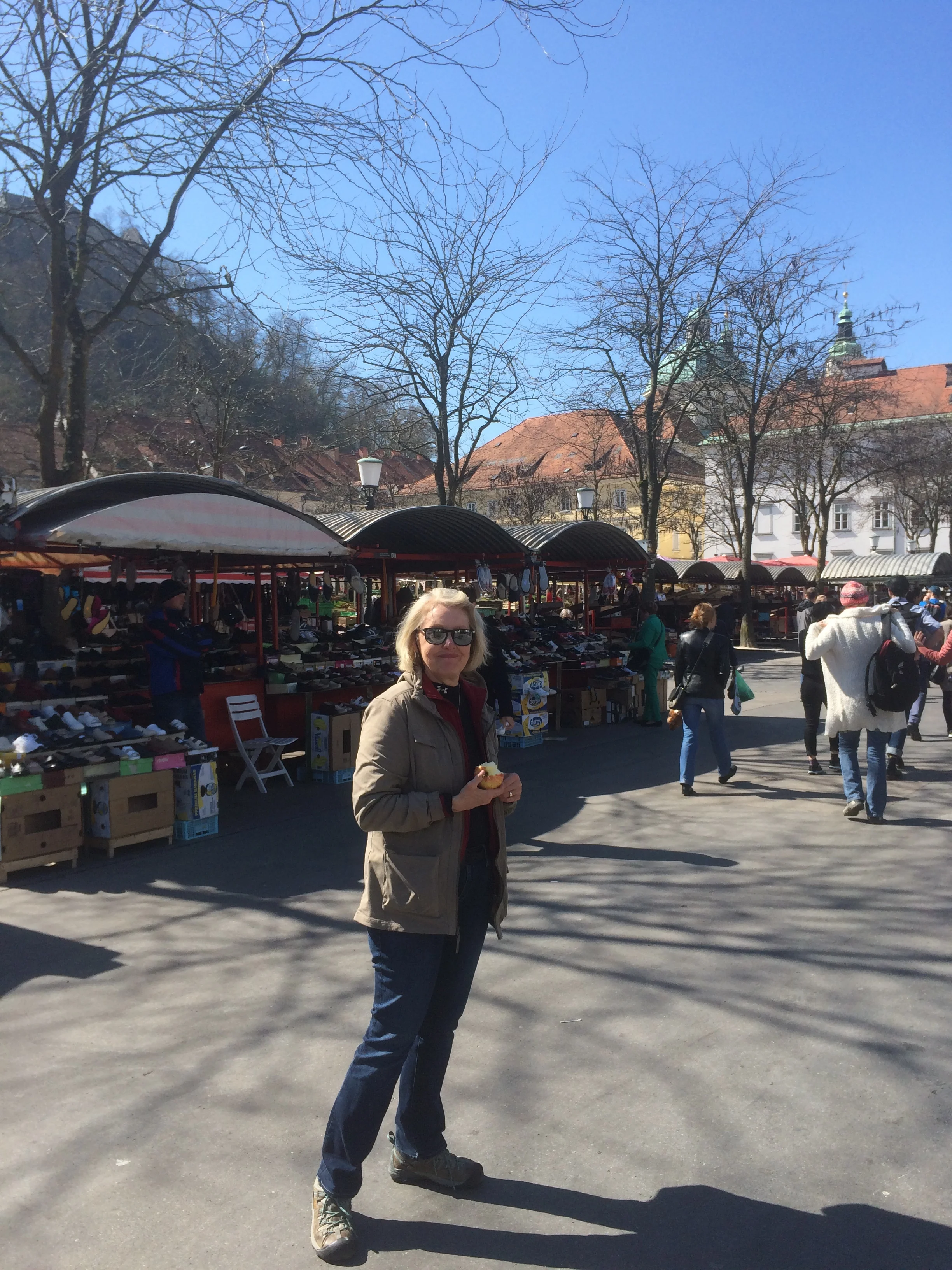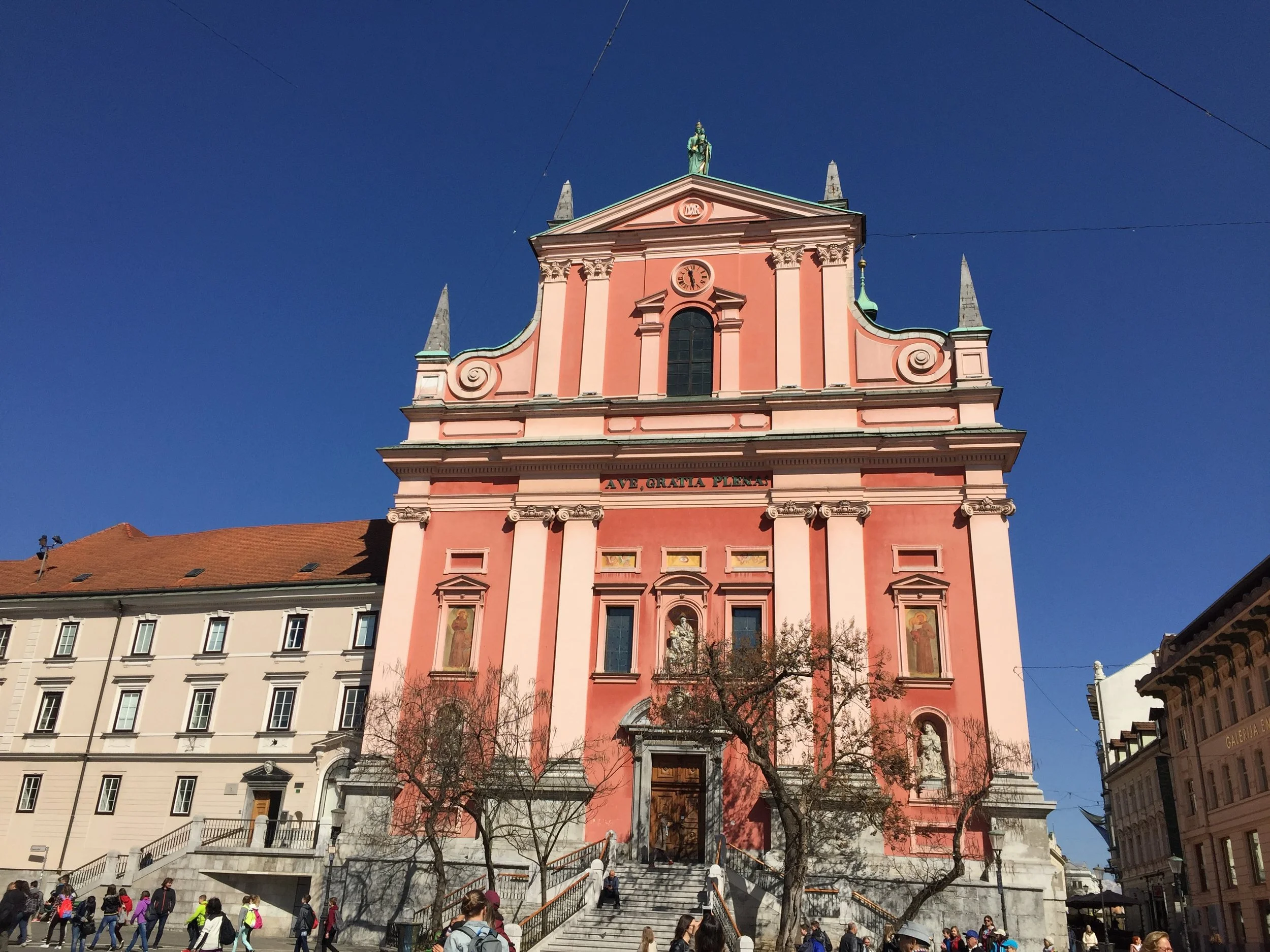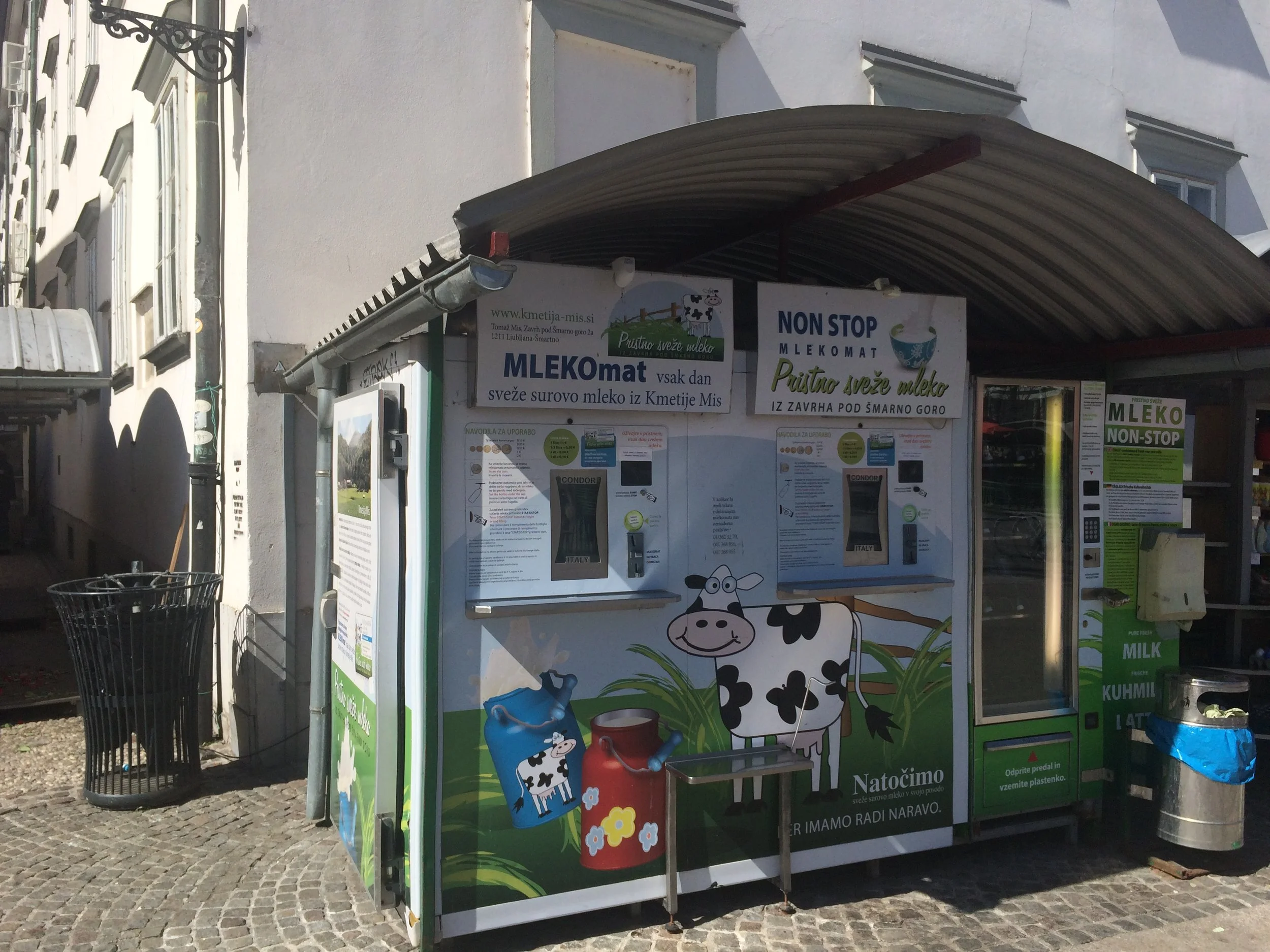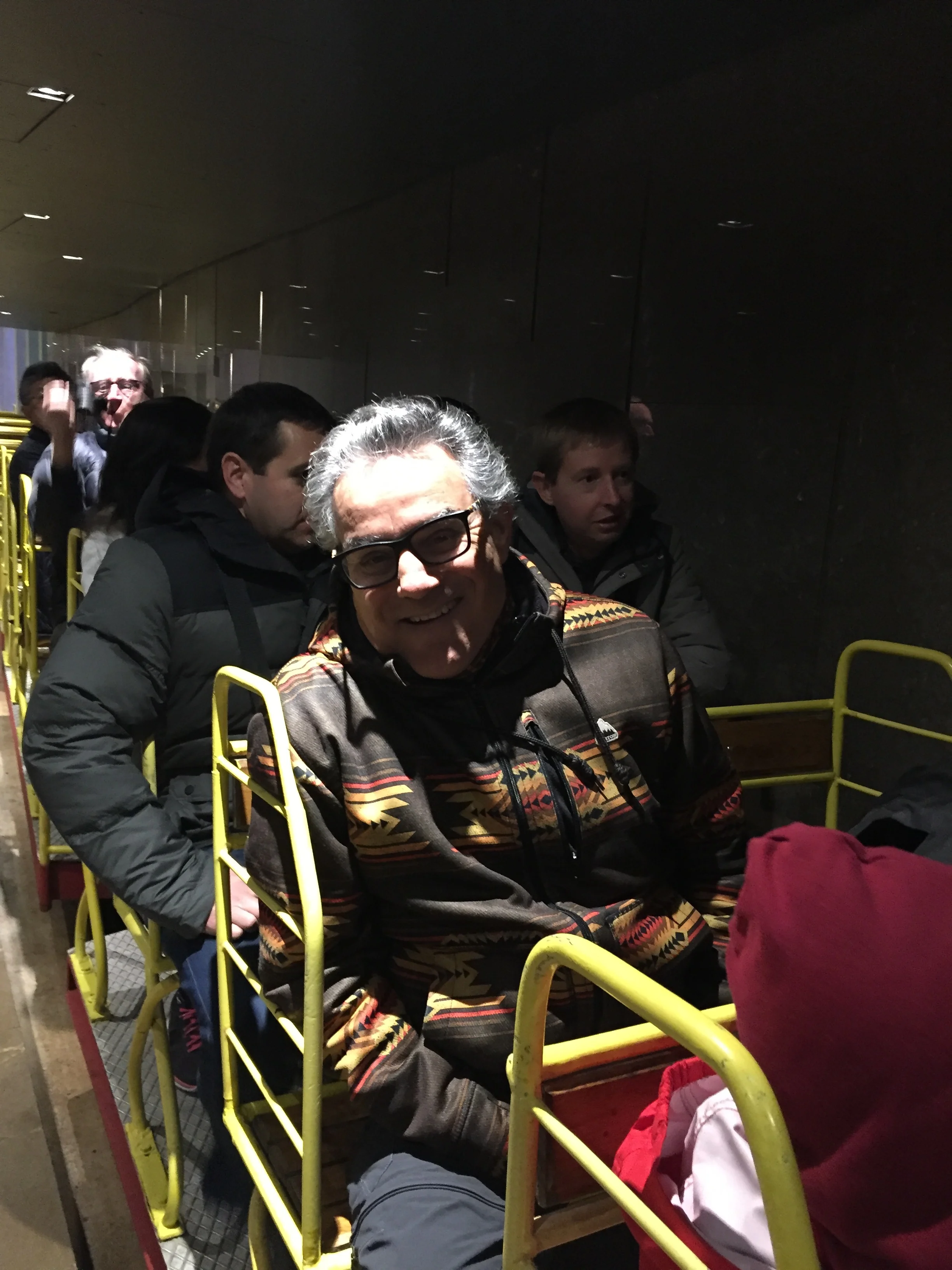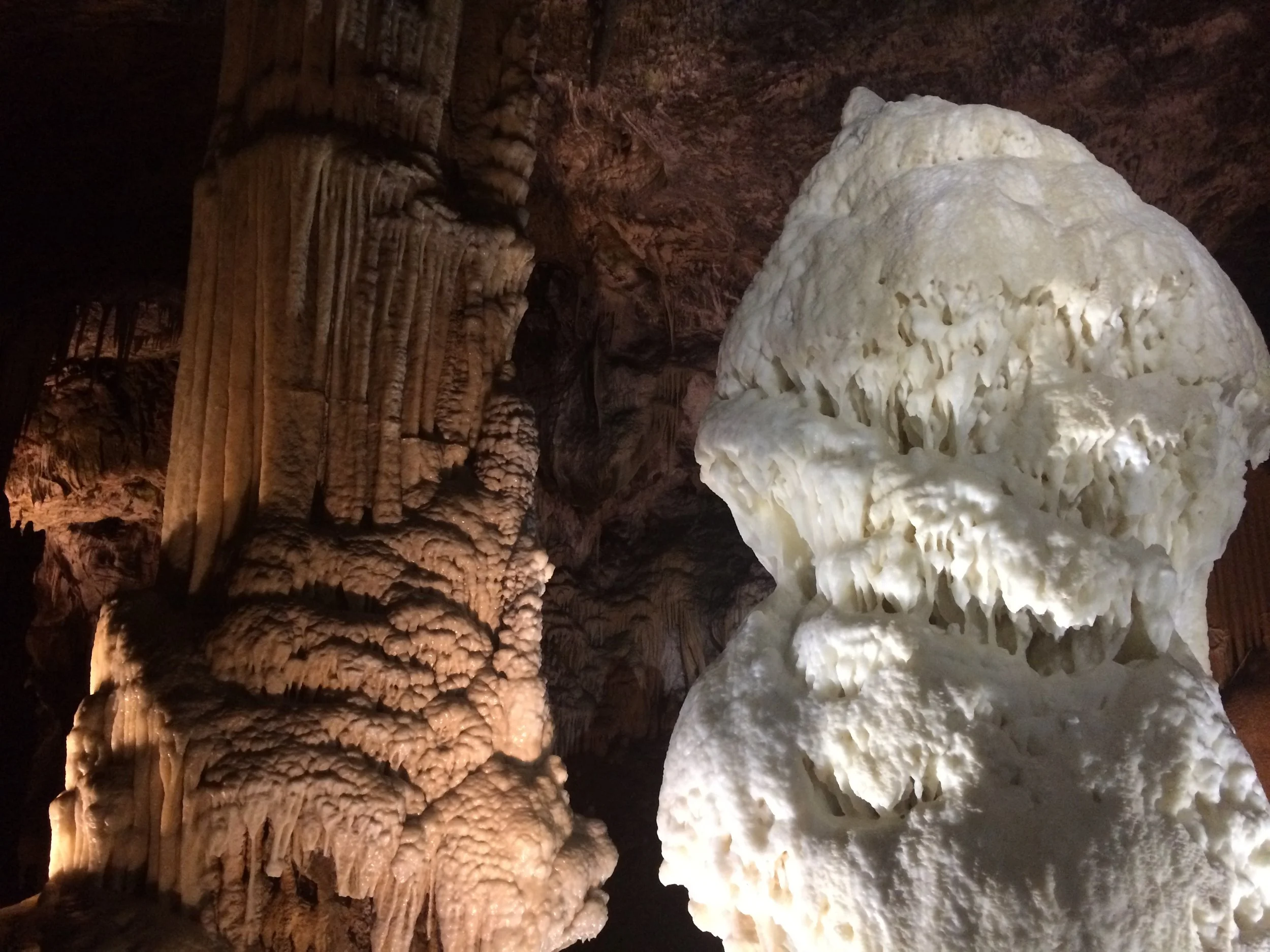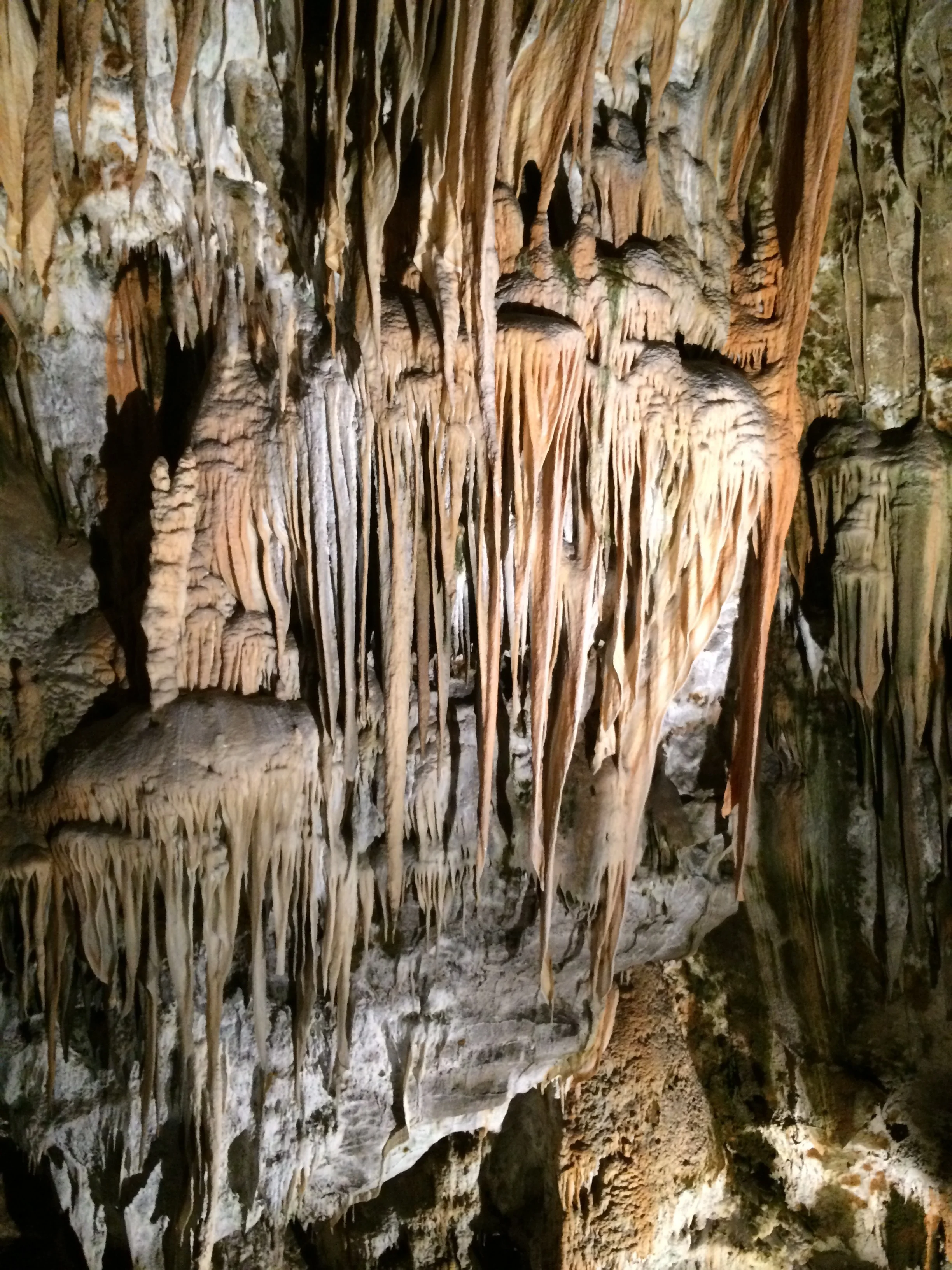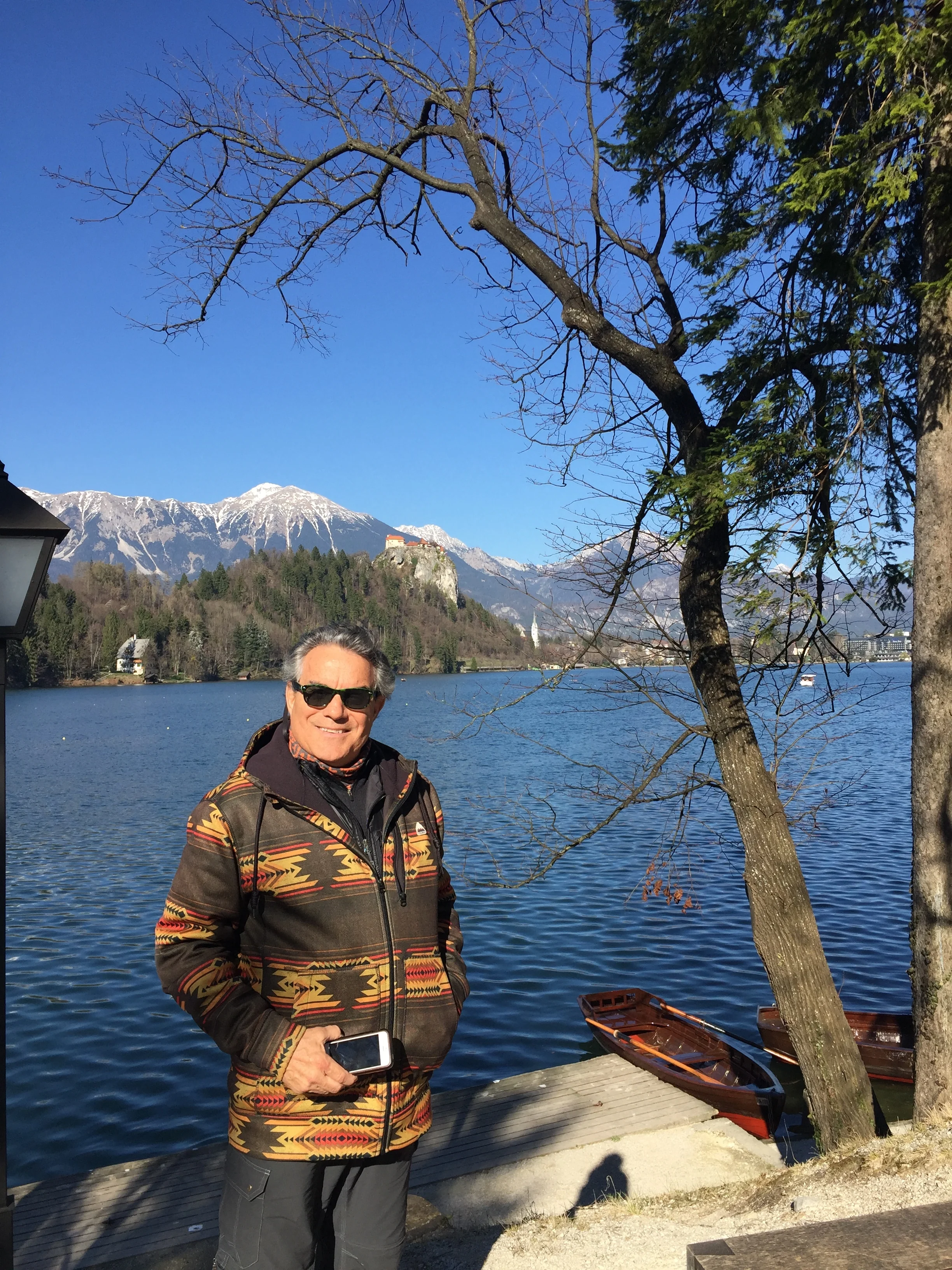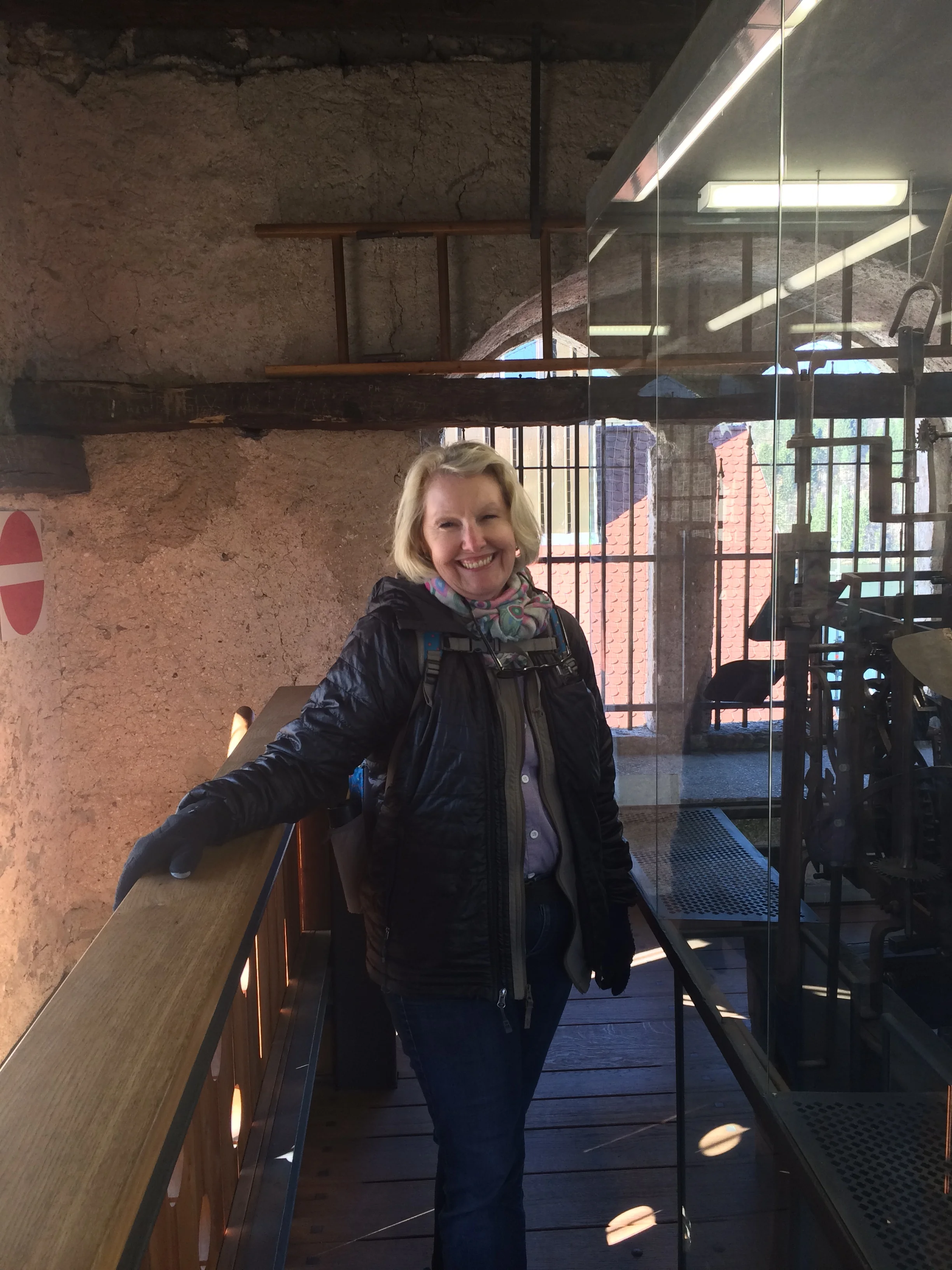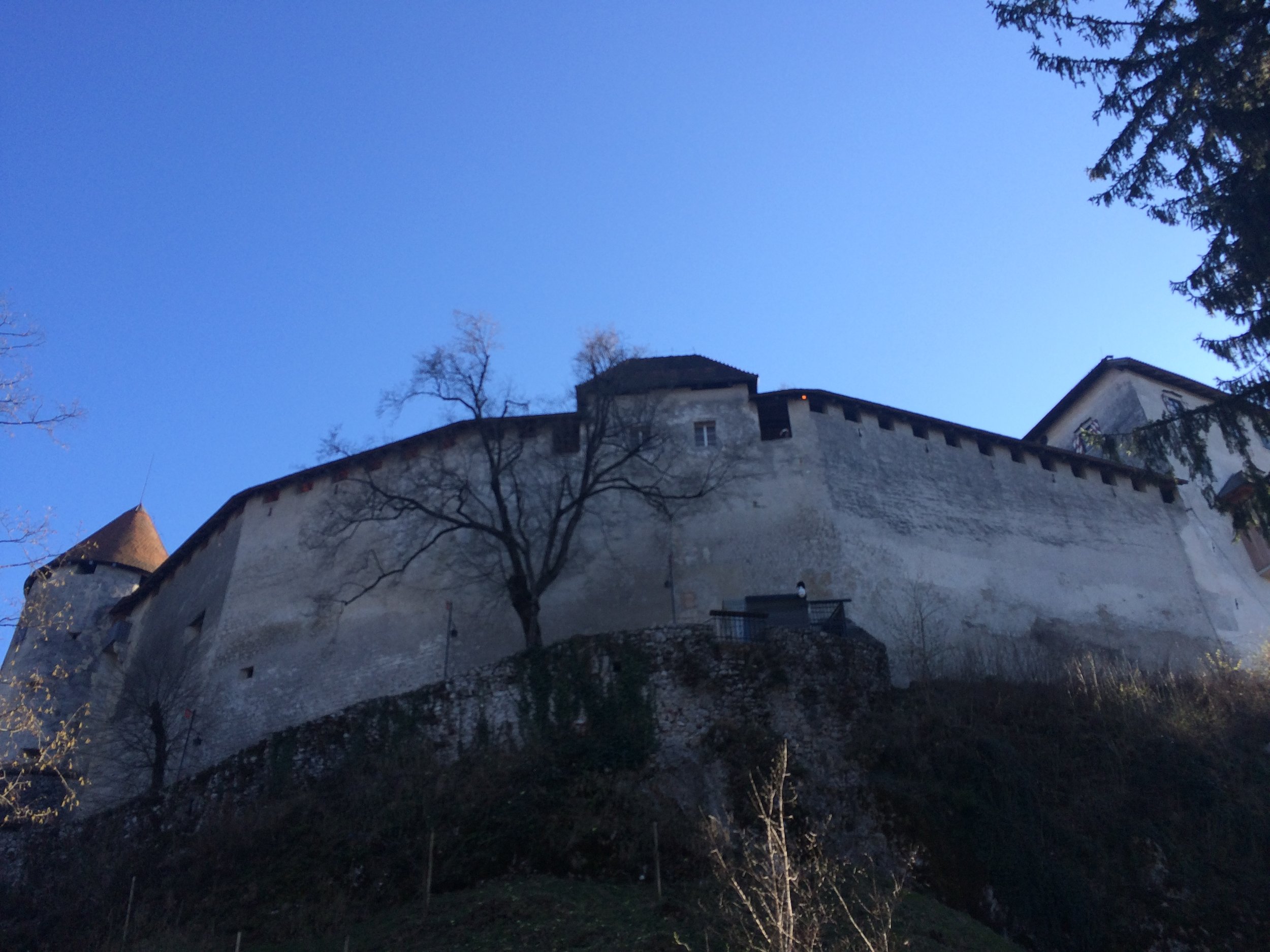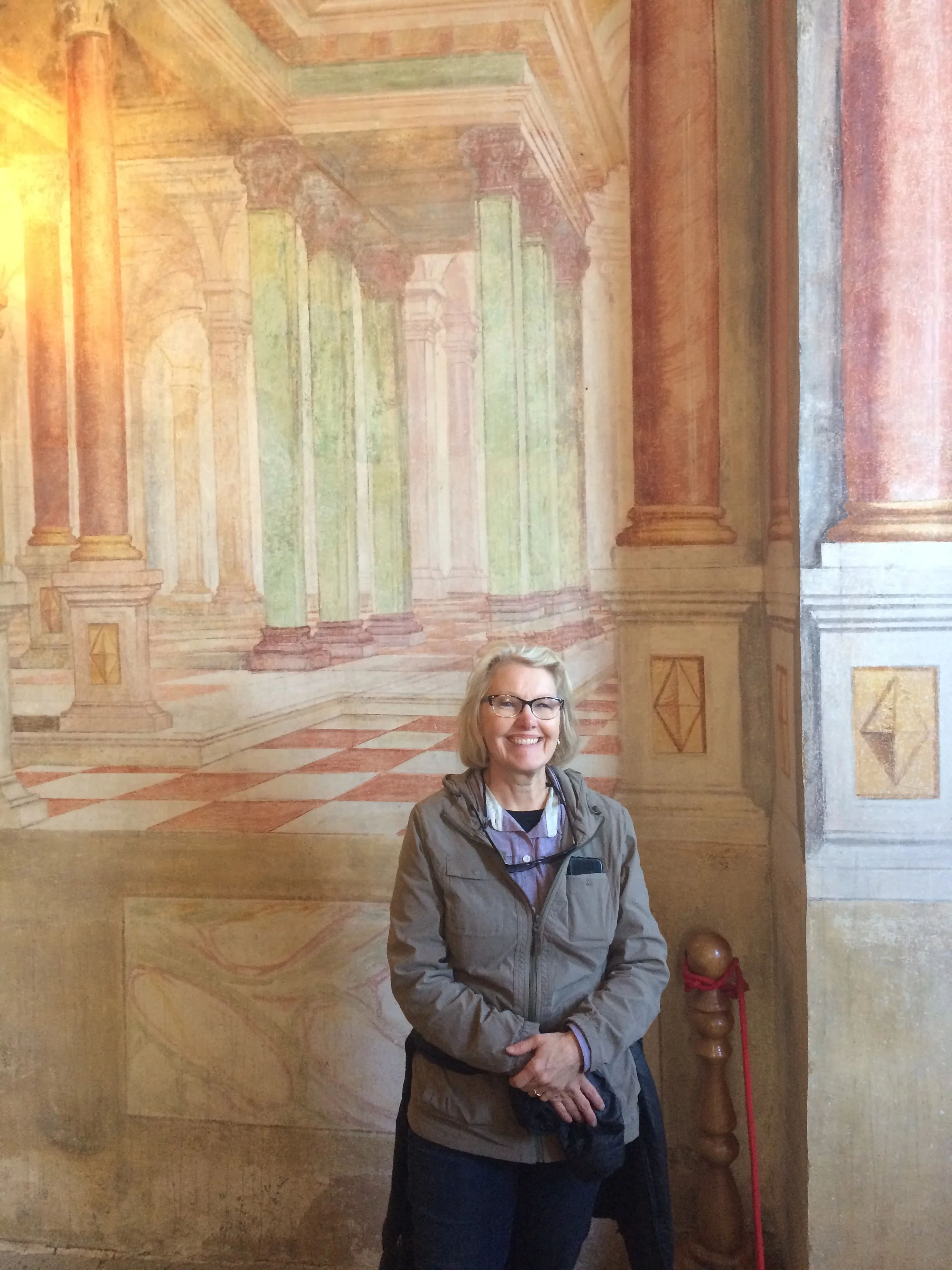Frank in Ljubljana
Our trip is taking us into “Eastern Europe”and the former Soviet controlled nations. Slovenia, not to be confused with Slovakia, abuts northern Italy, is wedged between the Alps and Adriatic Sea, is predominantly Catholic, has a population of 2 million, and asserts it should be recognized as “Central Europe”. This journey should be interesting. We had no real idea of what to expect. After being in Paris and Rome, the most popular world tourists sites, we are going off to the the back woods of Europe in the former area of Yugoslavia. It was not until 1991 that Slovenia broke away and achieved independence. We found that Slovenia has had very strong ties with Germanic culture as it was controlled by the Austrian “Habsburg” Family for centuries--so it is more akin to Austria than the other Slovak neighbors. Subject to Nazi, then Soviet control as part of Yugoslavia after WWII, finally after centuries of looking to the west, Slovenia joined the European Union in 2004. It uses the Euro currency, but things are much cheaper, and it has a parliamentary government. There will be more insights to come as we explore and sample.
Our trip started with waited with the kids until their train left for Rome to catch a flight home, after not seeing them for 6 months it was a hard goodbye.
Then we took another water taxi to the bus station, rather bus stop, on the “countryside” of Venice. Our reliable FlixBus bus arrived on time for 8:00 PM and we arrived in Ljubljana, Slovenia at midnight. The guide book writes out the name as “Lyoob-lyee—AH-nah”. That is impossible to say. Forget it, quickly speak as the natives: “Lu-be-lay-na”. Our host offered free pick up and transport; good deal. He showed up in his old SKODA hatchback and joyfully crammed our luggage into the hatch. It was late and he let us in without securing payment and left us promising to be back in touch.
The street of our apartment
Ljubljana
The apartment was an upstairs flat in a common family neighborhood.. It was rather new and comfy. We had planned to stay only 2 nights, but liked the place and the town so booked 2 nights more. This gave us an opportunity to take in more sights and to rest after our whirlwind outing with Charlie and Gabrielle in Italy.
We found the city of Ljubljana tremendously inviting and super clean. The river runs through the town and the river banks are paved with wide sidewalks filled with restaurants, bars with outdoor seating, and nifty shops. Farther down the river a Grecian Agora type market place with columns is fully active with fruits, veggie and meat stands. Apparently, you can buy horse meat as a staple. We could walk, and did, from our flat to the center of town several times without delay. With a mayor pushing modern urban planning, the city center is a no car zone with pedestrian only walkways to the main public square named France Pedersen Plaza, after their favorite poet. We walked all around including taking the funicular to the hilltop Ljubljana Castle. We checked out the living areas, chapel, and dungeons with virtual video about life of prisoners, as well as strolling the parapets for the views of the old city and the far out suburbs.
We also took a walking tour offered by an enthusiastic PhD candidate who obviously loved his city. The university is in the middle of town and the buildings are both historically Baroque or rather unusually modern. The Catholic Cathedral of St. Mary is also lovely. As you know, we see a lot of churches. The fun and interest is to see the artistic imagination demonstrating piety by all the various peoples.
This City is just so easy to get around that you are put at ease immediately. Watching moms and dads and kids walking along enhances the friendly feeling, but keep your head up for the bicyclists.
You could easily extend the stay in Slovenia, but we were limited so we signed up for a full day tour which provided transportation and allowed us to see 3 great sites in one day.
The driver /guide was a very handsome young lady from Ljubljana who spoke impeccable english, but with an Australian accent. Apparently she studied “her guide books down under”. Our small tour group included 4 Australians, an Argentinian, an Iranian, and us. Phil and Helen, open and inviting Aussies actually from Tasmania, were on a 2 month trip, but had traveled globally before. They were very helpful with sightseeing ideas for our upcoming trip to Australia. Everyone was friendly and the group was animated. The morning trip was to the giant caves of Postojna, aka a lot of different spellings. As we drove, the guide gave us demographics lessons which lead to many questions, which lead to a rather in depth history and humanities lesson. It was apparent that Ivana was a very intelligent lady, and a decent driver too. The country side was beautiful, especially with the “Julian Alps” in the background. It is near to this area of these Alps, in the Soca River Valley, a site of gruesome WWI fighting, that “Earnest Hemingway” drove his ambulance for the Red Cross, was injured, sent to Milan to recuperate and fell in love with his nurse, as he wrote in “A Farewell to Arms”
The view from our tour bus
Postojna Cave Park
There are hundreds of caves throughout Slovenia, carved out by underground rivers. One of the biggest and best known, and close to the capital is Postojna. Our guide told us to use our imagination for this experience, BUT we still would not imagine the magnitude and beauty of this place. She was right. OMG, this excursion was worth the entire trip to Slovenia. This excursion is as close to a Disney World ride as you could expect in a former Soviet satellite. Once you enter the mouth of the cave, a tram system is set up to ride deep into into the cavern, about half a mile, where you exit and walk on prepared sidewalks for another 2 mile trek through gigantic caverns of back lighted stalagmites and all sorts of cave wonders and formations. There is one cavern so big it is called the “concert hall” and in fact live music is played there. Historic note: the Nazi stored ammunition in this cave and resistance fighters detonated some of the cache which left a tell tale area of rubble. Words can’t adequately describe the images. Check out the photos.
Cliff Castle
We took a quick trip to another mountain valley and found a hunting lodge used by the royal family Hapsburg. This lodge was part cave and part castle, too rough and rugged to be a summer home, but certainly a fortress none the less, with caverns behind the parapets. Apparently, a Robin Hood type character took over the fortress and held off the siege by a displaced Hapsburg for many months. The castle’s fatal design flaw placed the privy as an outhouse which was shelled with cannon fire while “Robin” was refreshing—he died. This was a fascinating structure, the way it was constructed and the different living levels and dungeons.
Lake Bled
We then drove to Lake Bled---Slovenia’s leading mountain resort. Here we where treated with Alpine panoramas, a fairy tale island monastery, and large hilltop fortress.
We started with lunch on the shore. Our friendly group sat at a large table and just chatted away. We finished lunch with a special dessert, vanilla cream pie, a local favorite. Yummy.
The group loaded on to a “Pletna” Boat where the special oarsman rows and strokes us across the water to the island. This is a century old business, much like the gondoliers in Venice. The island is capped with a super cute church with a tower and bell. The church has painted frescoes, lovely alter, and interesting ceiling construction. We pulled on the tower rope that hangs by the alter and had the bells ringing, then others stepped up and did the same. Legend has it that if the bell rings 3 times on one pull (not possible) your wish will come true. We also were able to climb the 91 steps of the church watch tower for great views of the island and surrounding countryside. The pendulum clock has been restored. We then walked the paths around this little island enjoying more views, especially the cliffhanging fortress overlooking the area. Check out some photos.
Bled Castle
We boated back to land and drove the winding road up to the Bled Castle. Initially built 1000 years before in lesser form, it has expanded over the centuries and was the government seat of Austrian Bishops. The views along the parapets are fantastic and the frescoed chapel is original. Some areas are early shops, such as the wine and print shops. Still, the experience was worthwhile, and of note was the replica Gutenberg Printing Press that first brought the printed New Testament to the peasant population of Slovenia.
As we drove back to Ljubljana, our guide talked more about the culture of her country. Historically, Slovenians were peasants, hard working and practical. Their language was considered crude, not worthy of printing, and in fact forbidden to be printed. It was Mr. Primoz Turbin who printed an alphabet primer and the Bible for his people. The education the population led to the popularity of the Poet “France Preseren”. His statue stands in Ljubljana. His poem “Toast”, really a drinking song, but inspiring brotherhood, became the National Anthem. He wrote the phrases to take the shape of a wine glass. He wrote other love poems and lived a life akin to “Romeo and Juliet”. Unfortunately, his Juliet did not return the affection. Apparently, other Slovenian authors were more pessimistic, and after centuries of being under the control of foreign powers, our guide thought some of that pessimism lingered. In our opinion, it likely would be a heavy lift moving from dictatorship to democracy. To us the current Slovenians seem easygoing, stylish and fun, the “type of people you would like to chat with over a cup of coffee”. By the way, First Lady Melanie Trump was born in Slovenia.
Tomorrow we are off to the neighboring Slavic state of Croatia.


